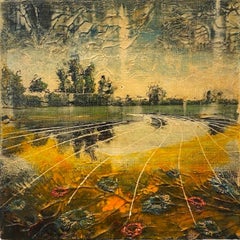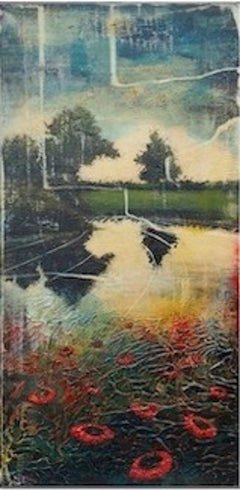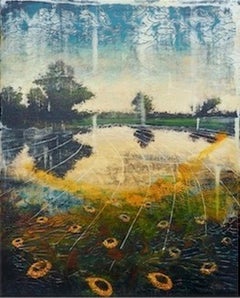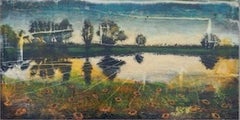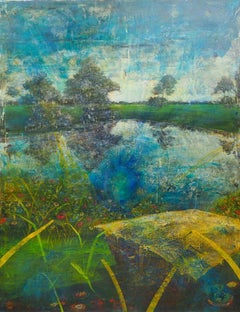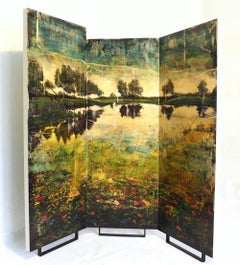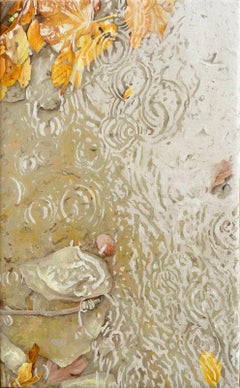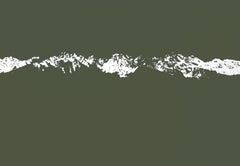Jernej Forbici Art
Jernej Forbici studied at the College for Visual Arts in Ljubljana, Slovenia. He completed a degree in painting (with honors) under Professor Carlo Di Raco at the Academy of Fine Arts in Venice and then a Master’s degree in visual and performing arts disciplines. From 1999, his work has been presented in numerous solo and group exhibitions in various European countries, the United States, Canada, Argentina and China. Forbici has been invited to participate in the following Biennales: Hicetnunc, Pordenone (2003); International Biennale of Contemporary Art in Prague, German pavilion (2005); Accade, 52nd Venice Biennale (2007) and 54th Venice Biennale, Arsenale pavilion (2011). In 2009, the Academy of Fine Arts of Venice organized a retrospective of Forbici’s works at the Magazzini del Sale, curated by Carlo Di Raco. In 2011, after having published his first monograph and presented five retrospectives in Italy and Slovenia, he was invited to participate in the exhibition Il Fuoco della Natura in Trieste. In 2012, Forbici won a scholarship from the Slovenian Ministry of Culture and took up residency in London to study the English masters. From 2013–18, he realized various projects in private galleries and public institutions in Italy and abroad (Venice, Varese, Milan, Latina, Piacenza, Montesarchio, Vienna, Maribor and Luxembourg), where Forbici showed the development of his pictorial work and his artistic research.
21st Century and Contemporary Contemporary Jernej Forbici Art
Canvas, Oil, Acrylic
21st Century and Contemporary Contemporary Jernej Forbici Art
Canvas, Oil, Acrylic
21st Century and Contemporary Contemporary Jernej Forbici Art
Canvas, Oil, Acrylic
21st Century and Contemporary Contemporary Jernej Forbici Art
Oil, Acrylic
21st Century and Contemporary Contemporary Jernej Forbici Art
Canvas, Oil, Acrylic
21st Century and Contemporary Contemporary Jernej Forbici Art
Wood, Oil, Acrylic
21st Century and Contemporary Contemporary Jernej Forbici Art
Canvas, Oil, Acrylic
21st Century and Contemporary Contemporary Jernej Forbici Art
Canvas, Oil, Acrylic
21st Century and Contemporary Contemporary Jernej Forbici Art
Canvas, Oil, Acrylic
21st Century and Contemporary Contemporary Jernej Forbici Art
Canvas, Oil, Acrylic
21st Century and Contemporary Contemporary Jernej Forbici Art
Canvas, Oil, Acrylic
21st Century and Contemporary Contemporary Jernej Forbici Art
Canvas, Oil, Acrylic
21st Century and Contemporary Contemporary Jernej Forbici Art
Canvas, Oil, Acrylic
21st Century and Contemporary Contemporary Jernej Forbici Art
Canvas, Oil, Acrylic
2010s Contemporary Jernej Forbici Art
Canvas, Oil, Acrylic
2010s Contemporary Jernej Forbici Art
Wood, Acrylic, Oil
21st Century and Contemporary Contemporary Jernej Forbici Art
Canvas, Oil, Acrylic
2010s Contemporary Jernej Forbici Art
Canvas, Oil, Acrylic
2010s Contemporary Jernej Forbici Art
Oil, Wood, Acrylic
2010s Contemporary Jernej Forbici Art
Cotton Canvas, Acrylic, Oil
2010s Contemporary Jernej Forbici Art
Canvas, Acrylic, Oil
2010s Contemporary Jernej Forbici Art
Wood, Acrylic, Oil
2010s Contemporary Jernej Forbici Art
Canvas, Mixed Media, Oil, Acrylic
2010s Contemporary Jernej Forbici Art
Oil, Acrylic
2010s Contemporary Jernej Forbici Art
Oil, Wood, Acrylic
